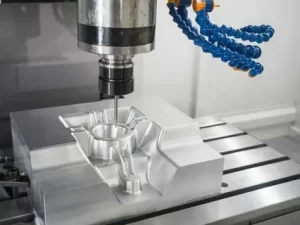Behind unmarked doors, bicycle batteries undergo scrutiny that rivals aerospace testing. Unlike bike battery, these units must survive exposure to direct elements while delivering consistent power. Quality control specialists examine units through processes most riders never imagine exist.
First Article Inspection
Each new production batch begins with intense scrutiny of initial units. Engineers measure hundreds of points, comparing them against digital models. Smart scanning systems detect variations smaller than a human hair. This process often reveals subtle manufacturing shifts that could affect performance.
Cell Matching
Individual cells undergo precise matching before assembly. Advanced testing equipment measures internal resistance and voltage characteristics. Unlike simple voltage checks, these tests examine cell behavior under various loads. Computers pair cells with nearly identical characteristics for optimal performance.
Assembly Verification
Smart cameras monitor every step of the battery assembly. They track component placement with microscopic precision. Artificial intelligence compares each unit against ideal models. Sometimes these systems spot potential issues that experienced assemblers miss.
Thermal Mapping
Infrared imaging reveals heat patterns during charging and discharging. Engineers study thermal signatures that indicate potential problems. Unlike car batteries, bike battery units must manage heat without liquid cooling. Each thermal scan can expose hidden manufacturing variations.
Recommended: Two Wheeler Battery
Seal Integrity
Waterproof seals face multiple testing methods. Pressure chambers detect microscopic leaks invisible to human eyes. Some manufacturers use helium testing for ultimate precision. Units undergo seal testing while experiencing thermal cycles and vibration.
Connection Quality
Advanced resistance testing examines every electrical connection. Automated systems stress connections while monitoring resistance changes. Unlike simple continuity tests, these reveal potential future failure points. Engineers study how connection quality affects overall performance.
Power Delivery
Load testing pushes batteries beyond normal operating parameters. Smart testing systems simulate various riding conditions. Unlike static load tests, these mirror real-world usage patterns. Computers analyze power delivery consistency across hundreds of cycles.
Protection Systems
Safety circuits undergo elaborate verification procedures. Engineers create fault conditions to test protection responses. Unlike basic overcharge protection, these tests examine multiple failure modes simultaneously. Each unit must demonstrate consistent safety performance.
Environmental Chamber
Controlled environments simulate various weather conditions. Batteries face temperature swings while delivering power. Unlike four wheeler battery testing, these focus on direct environmental exposure. Engineers study how weather affects every aspect of performance.
Vibration Analysis
Multi-axis vibration platforms recreate riding conditions. Smart sensors monitor physical and electrical changes during testing. Unlike simple shake tests, these combine vibration with thermal cycling. Computers analyze how vibration affects internal components.
Impact Resistance
Drop testing evolves beyond simple falls. Units face impacts from multiple angles while operating. Unlike typical impact tests, these examine how damage affects performance over time. Engineers study how physical stress influences electrical characteristics.
Data Collection
Smart systems record thousands of measurements during testing. Artificial intelligence analyzes patterns too subtle for human observation. Unlike basic quality control, these systems learn from each test. Computers identify potential issues before they become problems.
Chemical Stability
Sophisticated sensors monitor chemical characteristics during testing. Engineers study how internal chemistry changes under stress. Unlike simple voltage tests, these reveal long-term stability issues. Each test adds to understanding of battery chemistry.
Real-World Simulation
Test units undergo accelerated life cycle testing. Machines compress years of use into weeks. Unlike laboratory tests, these mirror actual usage patterns. Engineers study how daily use affects long-term reliability.
Production Monitoring
Quality control extends throughout production processes. Smart systems track every manufacturing step. Unlike traditional inspection, these prevent problems before they occur. Computers maintain consistent quality across production runs.
Material Verification
Advanced scanning systems check incoming materials. Engineers verify chemical composition and physical properties. Unlike basic inspection, these detect subtle material variations. Each component must meet precise specifications.
Assembly Tracking
Digital systems monitor every assembly operation. Computers record detailed data about each unit. Unlike simple tracking, these systems analyze assembly patterns. Engineers study how assembly variations affect performance.
Final Testing
Completed batteries undergo comprehensive evaluation. Smart testing systems check hundreds of parameters. Unlike basic function tests, these predict long-term reliability. Each unit must pass stringent performance standards.
Documentation Control
Sophisticated systems maintain detailed testing records. Computers track every unit through production and testing. Unlike simple paperwork, these records help improve future designs. Engineers study patterns across thousands of units.
The dedication to quality control transforms bicycle battery manufacturing. Each step adds layers of verification and validation. Engineers constantly refine testing procedures based on results. The pursuit of perfect quality never ends.
Behind every reliable bike battery lies an invisible web of quality control. Manufacturers examine units from every possible angle, learning from each test. They simulate impossible conditions to ensure real-world reliability. Every inspection adds to product understanding.
This commitment ensures consistent performance in daily use. Cyclists rarely notice the protection their batteries provide. Years of quality control create products that simply work, regardless of conditions.
The future promises even more sophisticated quality processes. As battery technology advances, verification methods evolve. Engineers anticipate tomorrow’s challenges while solving today’s problems. The quest for perfect reliability continues.
Quality control remains central to battery development. As electric bikes battery become more common, standards rise. Manufacturers build on past successes while preparing for future challenges. Each advance brings us closer to ideal battery performance.
The quiet evolution of quality control by the best bike battery continues, driven by real-world needs. Each improvement makes electric bikes more practical for daily use. Engineers push boundaries while maintaining safety and reliability. The partnership between quality control and innovation shapes cycling’s electric future.






